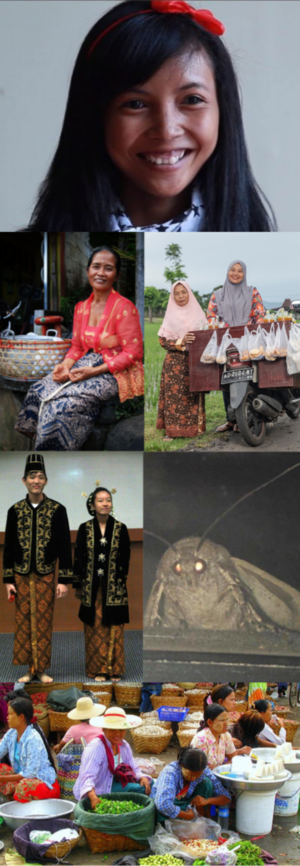Loa: Difference between revisions
Takatta Loa (talk | contribs) mNo edit summary Tag: 2017 source edit |
Takatta Loa (talk | contribs) mNo edit summary Tag: 2017 source edit |
||
| Line 55: | Line 55: | ||
The term ''Loa'' refers to a very broad collection of groups unified by a general sense of Loa nationalism, language and broad cultural features. These groups include the Isi Loa who are the progenitors of Loa culture and civilisation, the Loa influenced cultures such as the various mainland Polynesians that were assimilated into the Loa and the many elements of the Loa diaspora. These groups combined constitute the Loa, though all generally recognize the Isi Loa as being the 'ethnic' Loa and the other groups considering themselves as culturally Loa. | The term ''Loa'' refers to a very broad collection of groups unified by a general sense of Loa nationalism, language and broad cultural features. These groups include the Isi Loa who are the progenitors of Loa culture and civilisation, the Loa influenced cultures such as the various mainland Polynesians that were assimilated into the Loa and the many elements of the Loa diaspora. These groups combined constitute the Loa, though all generally recognize the Isi Loa as being the 'ethnic' Loa and the other groups considering themselves as culturally Loa. | ||
The Loa tend to be identified by speaking [[Insuo Loa]], which has historically been considered as a primary characteristic of being Loa, as well as matriarchal cultural elements, mystical religious practices and wet rice agriculture. The Loa themselves are considered separate but descended from the Polynesians, with a general retention of Polynesian material culture such as bark cloth and advanced sailing techniques, as well as strong social hierarchy and a close connection to nature with the view that people are tenants of the land. However, the view of ''mana'' being the guiding energy of the universe is not present in the Loa. Occidental scholars assume that the Loa idea of [[Kapuhenasa|''Me'eaala Moliae'', or 'Eternal Witness']] as being descended from ''mana'', but Loa scholars rejecting this, considering ''Me'eaala Moliae'' as being their own unique cultural trait. The Loa in general have a very distinct religious tradition from most Polynesian groups, focusing on divination of the dead, entomancy and cosmic predetermination, concepts that do not have the same focus or are not even present in other Polynesian groups. | |||
==Etymology== | ==Etymology== | ||
Revision as of 09:55, 27 September 2023
Loa | |
|---|---|
 Clockwise from top: A Loa girl from the northern Seoua Highlands ~ Safa Loa selling traditional Islamic pastries ~ High Minister of Foreign Affairs Ngueka ueue Kalai'iinga ~ A marketplace in eastern Ahoso ~ A traditional Masa wedding pair ~ A woman from Disa'adakuo | |
| Total population | |
| c. 155,090,053 worldwide, 134,562,985 in Takatta Loa, 20,527,068 diaspora | |
| Regions with significant populations | |
| 134.5 million | |
| 10 million | |
| 4.8 million | |
| 2 million | |
| 1,075,465 | |
| 1 million | |
| 900,000 | |
| 250,000 | |
| 10,000 | |
| 212,000 | |
| 120,000 in Truk | |
| 30,000 | |
| 25,000 | |
| Languages | |
| Insuo Loa | |
| Religion | |
| Related ethnic groups | |
The Loa are a cultural and ethnic group found predominantly in Vallos, being native to the Republic of Takatta Loa. There is a large Loa diaspora, consisting largely of neighboring Vallosian and Sarpedonian nations, as well as other nations in the Coscivo-Loa Sphere such as Kiravia and Paulastra. The Loa migrated to these nations either during the Takatta Loa Civil War or during the 20th century following the political liberalization of the country and the foundation of the republic, though migration to Coscivian speaking countries also occurred during the first half of the 1900s as well due to close historical ties to Kiravia.
The term Loa refers to a very broad collection of groups unified by a general sense of Loa nationalism, language and broad cultural features. These groups include the Isi Loa who are the progenitors of Loa culture and civilisation, the Loa influenced cultures such as the various mainland Polynesians that were assimilated into the Loa and the many elements of the Loa diaspora. These groups combined constitute the Loa, though all generally recognize the Isi Loa as being the 'ethnic' Loa and the other groups considering themselves as culturally Loa.
The Loa tend to be identified by speaking Insuo Loa, which has historically been considered as a primary characteristic of being Loa, as well as matriarchal cultural elements, mystical religious practices and wet rice agriculture. The Loa themselves are considered separate but descended from the Polynesians, with a general retention of Polynesian material culture such as bark cloth and advanced sailing techniques, as well as strong social hierarchy and a close connection to nature with the view that people are tenants of the land. However, the view of mana being the guiding energy of the universe is not present in the Loa. Occidental scholars assume that the Loa idea of Me'eaala Moliae, or 'Eternal Witness' as being descended from mana, but Loa scholars rejecting this, considering Me'eaala Moliae as being their own unique cultural trait. The Loa in general have a very distinct religious tradition from most Polynesian groups, focusing on divination of the dead, entomancy and cosmic predetermination, concepts that do not have the same focus or are not even present in other Polynesian groups.